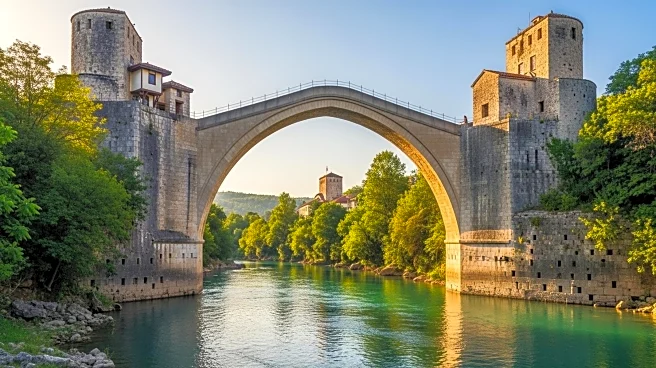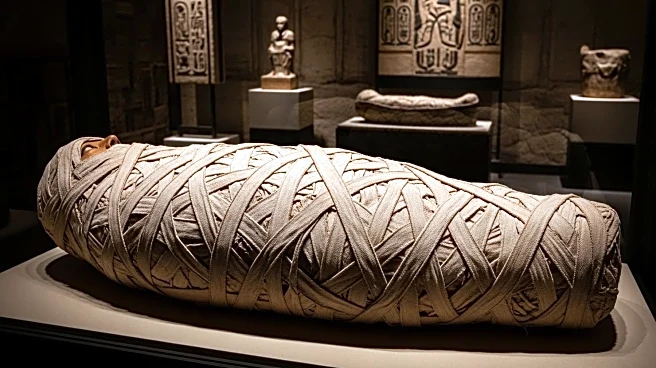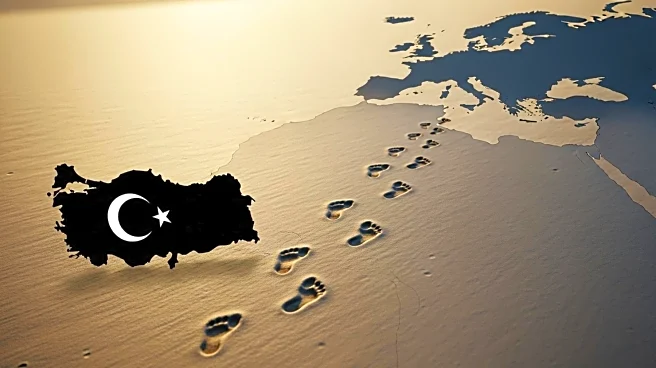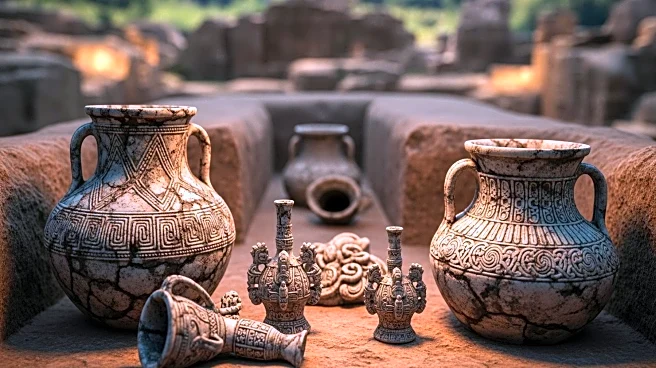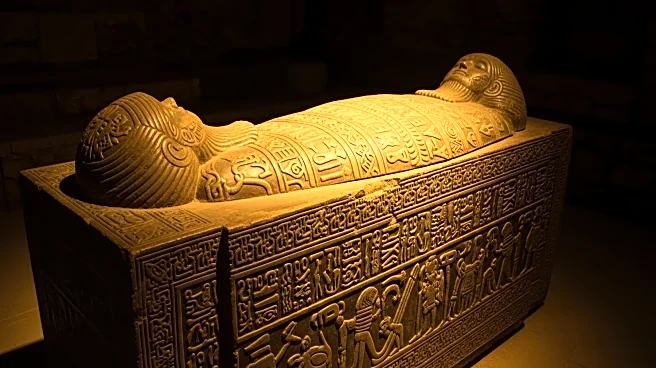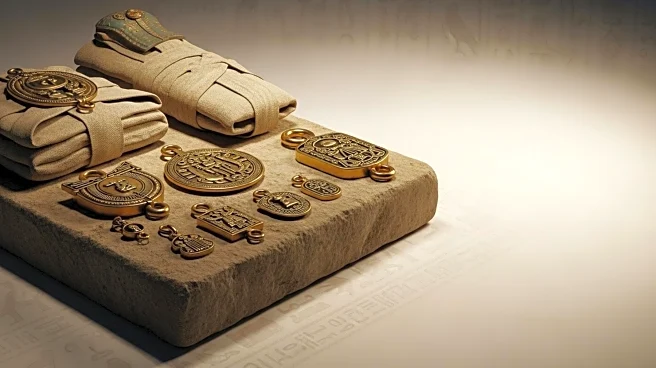What is the story about?
What's Happening?
Researchers have discovered over 100 stone artifacts along the Anatolian coast, indicating a previously unknown land bridge that may have facilitated early human migration between Asia and Europe. Published in the Journal of Island and Coastal Archaeology, the study highlights Ayvalık as a significant site for understanding human dispersal during the Paleolithic period. The artifacts, including hand axes and Levallois flake tools, suggest that this region was part of a technological tradition shared across continents, challenging the established migration routes through the Levant and Balkans.
Why It's Important?
The discovery of this potential land bridge could redefine the understanding of human migration patterns and technological development during the Pleistocene epoch. It suggests that early humans may have used alternative routes to migrate into Europe, contributing to the broader narrative of human evolution. This finding emphasizes the importance of Ayvalık in prehistoric studies and could lead to new insights into the cultural and technological exchanges between early human populations.
What's Next?
To confirm the existence of the land bridge, researchers plan to conduct further studies, including artifact dating and environmental reconstructions. These efforts may involve exploring the seabed of the Aegean Sea for additional evidence. The findings could prompt a reevaluation of the region's significance in early human history and migration patterns.
AI Generated Content
Do you find this article useful?
